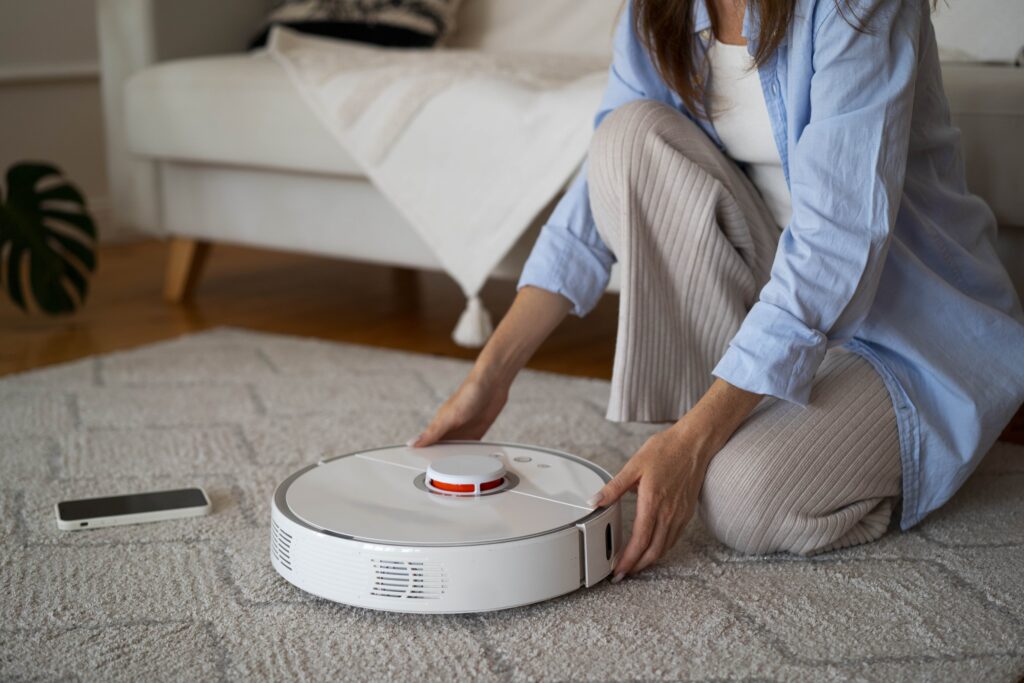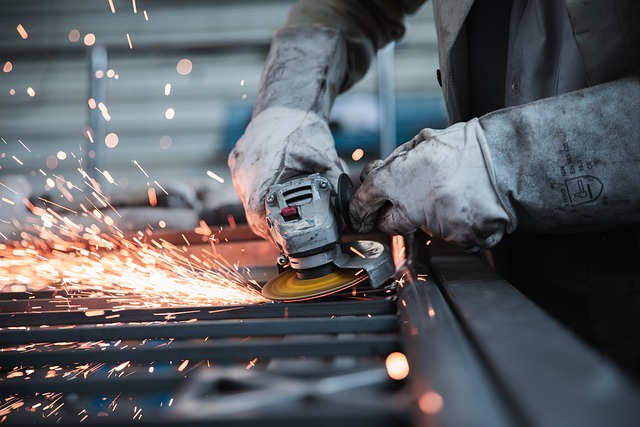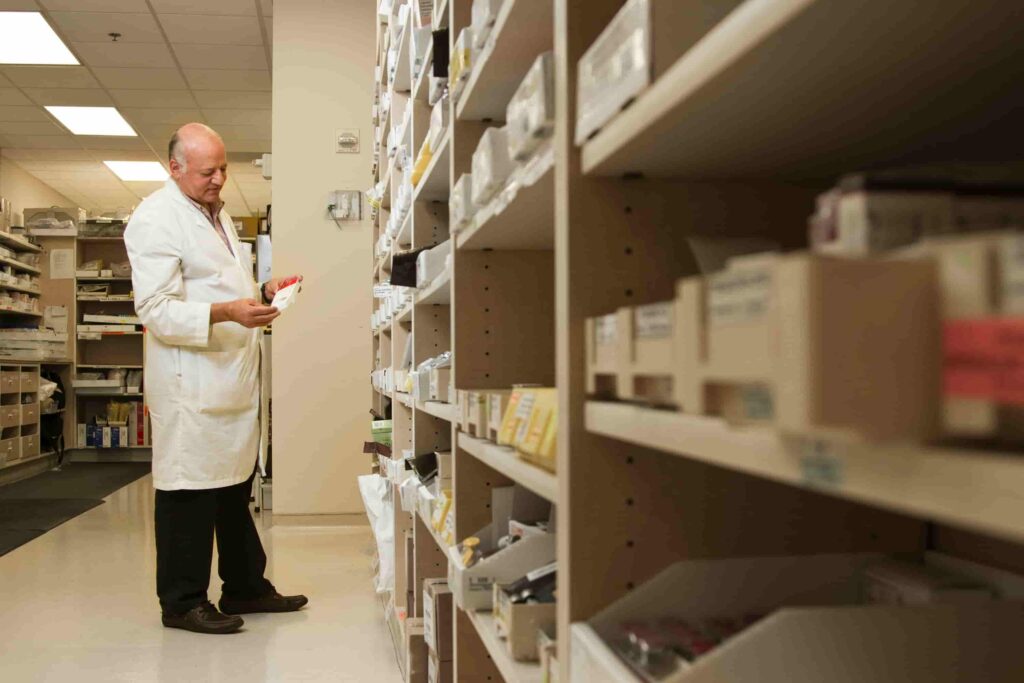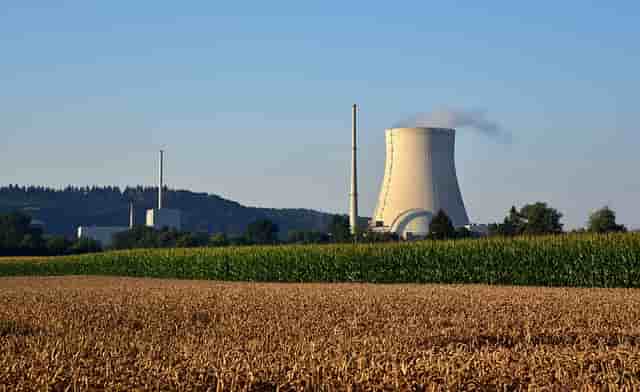Vacuum technology encompasses processes and physical measurements conducted under conditions of below-normal atmospheric pressure. It serves various purposes such as removing atmospheric constituents to prevent reactions, disturbing equilibrium conditions, extending particle travel distances, and reducing molecular impacts for clean surfaces.
Vacuum technology is crucial in industries like electronics, manufacturing, and research, enabling advancements in physics, materials science, and more. It involves a range of devices like oil-sealed rotary pumps, mechanical boosters, and ion pumps to create, maintain, and measure vacuums.
Additionally, air-powered vacuum technology, utilizing the venturi effect, is widely used in automation and manufacturing industries, offering a versatile and efficient method for creating vacuum pressure.
What are the different types of vacuum technology.

There are several main types of vacuum technology:
Positive Displacement Vacuum Pumps
These pumps function by forcing a certain amount of gas through the pump while mechanically trapping it. Common types include:
- Oil Sealed Rotary Vane Pump (Wet)
- Liquid Ring Pump (Wet)
- Diaphragm Pump (Dry)
- Scroll Pump (Dry)
- Roots Pump (Dry)
- Claw Pump (Dry)
- Screw Pump (Dry)
Kinetic Vacuum Pumps
Momentum transmission is used by kinetic pumps to guide gas toward the pump outlet. They can achieve high compression ratios at low pressures. Common types include:
- Turbo molecular Pumps (Dry)
- Vapor Diffusion Pumps (Wet)
Entrapment Vacuum Pumps
Rather than transferring gas, entrapment pumps capture gas molecules using cryogenic condensation, ionic reaction, or chemical reaction. They can provide extremely high vacuum but operate at lower flow rates. Common types include:
- Cryopump (Dry)
- Sputter Ion Pumps (Dry)
Air-Powered Vacuum Technology
This uses the venturi effect, forcing compressed air through a limiting orifice to create a negative pressure or vacuum. It is widely used in automation and manufacturing. Other types include regenerative pumps for low-flow, high-pressure applications, scroll pumps which are oil-free, and diffusion pumps which use a heated oil vapor to create high vacuum.
Benefits of using vacuum technology in Manufacturing.
The benefits of using vacuum technology in manufacturing are numerous and far-reaching. Vacuum technology plays a crucial role in various industries, including pharmaceuticals, semiconductors, and food and beverage production. Here are some of the key benefits:
Control of Contamination
Vacuum technology allows for the removal of atmospheric gases and contaminants, creating a clean environment that is essential for the production of sensitive materials and products.
Material Deposition and Processing
Vacuum conditions enable the deposition of thin material coatings, which enhance the function of various products. It also aids in material processing, such as purification and distillation, by creating an environment that facilitates the separation of compounds with different boiling points.
Heat Flow Reduction
Vacuum technology helps reduce heat flow, which is critical in applications where temperature control is essential. This is particularly important in industries like semiconductor manufacturing, where precise temperature control is necessary for the production of high-performance chips.
Increased Vaporization
Vacuum conditions increase vaporization rates, which is useful in applications like freeze-drying, where the removal of water content is necessary to preserve food and other materials.
Production of Large Forces
Vacuum technology can be used to produce large forces, which is essential in applications like material handling and processing, where objects need to be lifted, positioned, and moved.
Energy Efficiency and Sustainability
The adoption of energy-efficient vacuum pumps can significantly reduce environmental impact and operational costs, contributing to sustainability goals while keeping production expenses in check.
Improved Product Quality and Shelf Life
Vacuum technology helps preserve meat products, fish, cheese, and other perishable items, extending their shelf life significantly. It also enables the production of high-quality food products through processes like sous vide cooking and freeze-drying, which preserve natural flavors and textures.
Consistency and Reliability
Vacuum technology provides a controlled environment for manufacturing processes, leading to consistent quality and reliability in the production of goods. This is particularly important in industries like pharmaceuticals, where product quality and consistency are critical.
In summary, vacuum technology offers a wide range of benefits that are essential for the production of high-quality goods in various industries. Its ability to control contamination, aid in material deposition and processing, reduce heat flow, increase vaporization, produce large forces, improve energy efficiency, and enhance product quality and shelf life turn it into a vital tool for contemporary manufacturing.

Basic Principles of Vacuum Technology?
The basic principles of vacuum technology involve creating and maintaining an environment with an absence or near absence of matter within a closed vessel. This is achieved by removing air or gases from the vessel, leading to various applications in manufacturing, scientific research, and technology. Some key principles include:
Control of Gas Pressure:
The degree of vacuum is determined by gas pressure, which is the cumulative force of individual gas molecules colliding with each other and the walls of the container. Gas pressure is a crucial factor in defining the vacuum level within a vessel
Gas Behavior under Vacuum:
Gases behave differently under vacuum conditions, approaching ideal gas behavior as pressure decreases. This simplifies the prediction of gas behavior and allows for precise control of molecular and surface interactions in experiments.
Vacuum Applications:
Vacuum technology is essential for various applications, such as producing thin film coatings used in reflective balloon coatings, hardened tool coatings, integrated circuit components, and anti-corrosion coatings. It is also vital in scientific research, enabling controlled environments for experiments in chemistry, physics, and high technology.
Vacuum Pumping:
Vacuum pumps play a critical role in creating and maintaining vacuum conditions. Different types of vacuum pumps, such as positive displacement pumps, kinetic pumps, and entrapment pumps, are used to achieve and sustain the desired level of vacuum in different applications.
Gas Flow Control:
In vacuum processes, gas flow and pumping speed are controlled to achieve the desired pressure in the vacuum chamber. Variables like gas flow rate, pumping speed, plasma power, and substrate temperature are adjusted to maintain stable pressure levels.
Applications in Manufacturing:
Vacuum technology is widely used in manufacturing processes for tasks like vacuum deposition, forming, liquid filling, gas replacement, oxidation prevention, degassing, and vacuum insulation. These applications contribute to product quality, efficiency, and innovation in various industries
Understanding these fundamental principles of vacuum technology is essential for designing and implementing effective vacuum systems across different industrial and scientific domains.
What is the vacuum process?
The vacuum process refers to the use of vacuum technology to create an environment with reduced air pressure or gas density for various industrial and scientific applications. The key aspects of the vacuum process include:
Creating a Vacuum
A vacuum is created by removing air or gases from a sealed container using vacuum pumps. Different types of vacuum pumps, such as positive displacement pumps, kinetic pumps, and entrapment pumps, are used to achieve the desired level of vacuum pressure.
Vacuum Levels
Vacuum processes can be categorized into different levels based on the pressure achieved:
- Low vacuum (soft vacuum): 100-1000 Pascals
- Medium vacuum: 0.1-100 Pascals
- High vacuum (hard vacuum): 10^-4 – 0.1 Pascals
- Ultra-high vacuum: below 10^-4 Pascals
Applications of Vacuum Processes
Vacuum processes are used in a wide range of applications, including:
- Materials processing (drying, filtering, coating)
- Chemical processing
- Manufacturing of electron devices and lamps
- Scientific research (e.g. particle accelerators, space simulation)
- Vacuum forming of plastics
Principles of Vacuum Processes
The vacuum process relies on principles like gas behavior under low pressure, gas flow control, and the use of specialized equipment to achieve and maintain the desired vacuum level.
Benefits of Vacuum Processes
Vacuum processes offer advantages such as:
- Improved productivity and performance compared to normal air pressure
- Enabling processes that are not possible in the presence of air
- Controlling contamination by removing atmospheric gases
- Facilitating material deposition and processing
In summary, the vacuum process involves creating and maintaining a low-pressure environment using vacuum pumps and specialized equipment to enable various industrial and scientific applications that benefit from the unique properties of a vacuum.
Industrial Applications of Vacuum Engineering.

Vacuum engineering has a wide range of industrial applications across various sectors. These applications leverage the unique properties of vacuum environments to enhance processes, improve product quality, and increase efficiency. Some of the key industrial applications of vacuum engineering include:
Materials Processing
Vacuum technology is used in materials processing for tasks like drying, filtering, and coating. It enables the production of materials with specific properties, such as thin film coatings, and is essential in the manufacturing of electron devices and incandescent lamps.
Chemical Processing
Vacuum engineering is applied in chemical processing to facilitate reactions, separations, and purifications. It allows for the creation of controlled environments that are essential for the production of chemicals and pharmaceuticals.
Semiconductor Manufacturing
The semiconductor industry relies heavily on vacuum technology for the production of integrated circuits and other electronic components. Vacuum environments are used to deposit thin films, etch patterns, and perform other critical processes.

Aerospace Industry
Industrial vacuum pumps are used in the aerospace industry for applications such as assembly, wind tunnels, engine testing, and altitude chambers. They play a crucial role in the development and testing of aircraft and spacecraft.
Food and Beverage Industry

Vacuum technology is used in the food and beverage industry for tasks like packaging, freeze-drying, and sterilization. It helps preserve food products by removing air and preventing the growth of microorganisms.
Pharmaceutical Industry

Vacuum engineering is applied in the pharmaceutical industry for tasks like lyophilization, sterilization, and packaging. It ensures the quality and purity of pharmaceutical products by controlling the environment in which they are manufactured.
Oil and Gas Industry
Vacuum pumps are used in the oil and gas industry for applications such as sewage treatment systems, transformer oil removal, and cleaning. They play a crucial role in the extraction, processing, and transportation of oil and gas.
Automotive Industry

Vacuum technology is used in the automotive industry for tasks like brake testing, engine testing, and climate control. It helps ensure the quality and performance of automotive components.
Medical Industry
Vacuum engineering is applied in the medical industry for applications such as radiation therapy, radiation surgery, and medical device manufacturing. It enables the development of medical devices that rely on vacuum technology to function.
Nuclear Industry

Vacuum technology is used in the nuclear industry to create safe environments for handling sensitive materials. It is also applied in particle acceleration research, such as at the Hadron Collider, where ultra-high vacuum is required.
Metallurgy
Vacuum engineering is applied in metallurgy for processes like impregnation, sintering, and degassing. It helps produce metals with specific properties and improves the quality of metal products.
Space Technology

Vacuum technology is used in space research to detect gravitational waves, observe black holes, and develop hyper speed trains. It enables the creation of ultra-high vacuum environments that are essential for these applications.
In summary, vacuum engineering has a broad range of industrial applications that leverage the unique properties of vacuum environments to enhance processes, improve product quality, and increase efficiency.
Safety considerations when using vacuum technology in industrial applications
When using vacuum technology in industrial applications, several safety considerations must be taken into account to ensure the well-being of personnel and the proper functioning of equipment. Here are the key safety considerations based on the provided sources:
Pressure and Vacuum Hazards:
The pressure inside a vacuum chamber can be significantly lower than atmospheric pressure, leading to potential hazards like implosion, collapse, explosions, or fires. Sudden changes in pressure, known as “pressure surges” or “vacuum explosions,” can also pose risks
Chemical Hazards:
Some vacuum systems use chemicals like solvents or gases, which can be toxic, flammable, or explosive. Proper handling procedures and precautions are essential to mitigate the risks associated with these chemicals
Electrical Hazards:
Vacuum systems often involve electrical equipment that can be prone to arcing in low-pressure environments. This can lead to equipment damage, fires, or explosions. Ensuring proper electrical safety measures is crucial
Radiation Hazards:
In certain vacuum systems, radiation can be a hazard, especially in processes like ion implantation in semiconductor manufacturing. Proper radiation safety procedures and training for personnel are necessary to prevent harm
Temperature Hazards:
Vacuum systems can generate high temperatures, particularly in processes involving plasma. These high temperatures can cause burns or damage to equipment, emphasizing the need for thermal safety measures
Oxygen Deficiency Hazards:
Some vacuum systems can create oxygen-deficient environments, which can lead to dizziness or unconsciousness. Proper ventilation and safety protocols are essential to prevent such hazards
Leak Tightness:
Ensuring the leak tightness of vacuum systems is crucial to prevent safety issues related to air leakage, such as reaction with pyrophoric gases, moving flammable gases, corrosion, or undesirable reactions with process gases. Regular checks and maintenance are necessary to maintain leak tightness
Use of Traps:
Using traps in vacuum lines is important to prevent liquids from being drawn into the pump, house vacuum line, or water drain. Traps protect the pump, piping, and personnel from potentially damaging effects of materials and prevent vapors from being emitted back into the laboratory or system exhaust
Container Selection:
Using containers that can withstand vacuum operations and avoiding flat-bottomed flasks are essential safety measures. Proper inspection of vacuum glassware before and after each use, along with disposal of stressed glassware, is crucial to prevent accidents
By adhering to these safety considerations, industrial applications of vacuum technology can be conducted safely and effectively, minimizing risks to personnel and equipment.
Safety guidelines for operating vacuum pumps in industrial settings
The safety guidelines for operating vacuum pumps in industrial settings are crucial to ensure the well-being of personnel and the proper functioning of equipment. Based on the provided sources, here are the key safety considerations:
Mechanical Hazards:
Mechanical vacuum pumps pose hazards related to moving parts. Guidelines recommend ensuring that pumps have belt guards in place during operation and that service cords and switches are free from defects. Placing a pan under pumps to catch oil drips and checking oil levels regularly are essential safety measures
Chemical Hazards:
Chemical hazards can arise from contaminating pump oil with volatile substances. It is crucial to avoid placing pumps near containers of flammable chemicals, using solvents that might damage the pump, and ensuring that the pump oil is changed and disposed of properly to prevent contamination
Implosion Hazards:
Vacuum systems pose implosion hazards. Safety guidelines recommend using traps on vacuum lines to prevent liquids from being drawn into the pump, house vacuum line, or water drain. Traps protect the pump, piping, and personnel from potentially damaging effects of materials and prevent vapors from being emitted back into the laboratory or system exhaust
Pressure and Vacuum Hazards:
Pressure and vacuum hazards can lead to implosion, collapse, explosions, or fires. It is essential to operate all components within their designed operating limits to prevent unexpected failures. Proper maintenance and adherence to operating limits are crucial to avoid hazards related to pressure and vacuum levels
Electrical Safety:
Electrical hazards can arise in vacuum systems due to arcing in low-pressure environments. Ensuring that electrical equipment is locked out before maintenance procedures and considering the effect of cleaning solvents on the vacuum system are important safety measures
Container Selection:
Using containers that can withstand vacuum operations and avoiding flat-bottomed flasks are essential safety measures. Proper inspection of vacuum glassware before and after each use, along with disposal of stressed glassware, is crucial to prevent accidents
Traps Usage:
Using traps in vacuum lines is important to prevent liquids from being drawn into the pump and to protect the pump and piping from potentially damaging effects of materials. Traps also prevent vapors and odors from being emitted back into the laboratory or system exhaust.
By following these safety guidelines, industrial settings can ensure the safe operation of vacuum pumps, mitigate risks associated with pressure, chemical, mechanical, and electrical hazards, and maintain a secure working environment for personnel.
Safety measures to be taken when working with vacuum systems that use chemicals
When working with vacuum systems that use chemicals, several safety measures must be taken to ensure the well-being of personnel and the integrity of the equipment. Based on the provided sources, here are the safety guidelines for working with vacuum systems that use chemicals:
Chemical Contamination:
Chemical contamination in vacuum systems can severely damage the equipment, cause pump failure, emit vapors that can re-enter the ventilation system, and even lead to explosions from the buildup of flammable vapors. It is crucial to handle chemicals with care and prevent their entry into the vacuum system
Use of Traps:
Place a trap between the experimental apparatus and the vacuum source to protect the pump and piping from the damaging effects of chemicals. Traps prevent vapors and odors from being emitted back into the laboratory or system exhaust. Different trap setups are recommended based on the type of material being worked with, such as water-based systems, volatile materials, or potentially infectious fluids
Cold Traps:
Install a cold trap in line after a suction flask while handling volatile compounds to condense fumes and safeguard the vacuum pump. Use a mixture of dry ice and solvent like isopropanol or ethanol for the cold trap. Avoid using liquid nitrogen due to the risk of oxygen condensation and explosive reactions with organic material
Proper Disposal:
Dispose of condensed liquid in the cold trap and the coolant once the dry ice has sublimated. Carefully handle the disposal of chemicals and contaminated materials to prevent environmental hazards and ensure safe waste management practices
Container Selection:
Use containers that can withstand vacuum operations and avoid applying a vacuum to flat-bottomed flasks. Heavy-walled round-bottomed glassware or specifically designed glassware like Erlenmeyer filtration flasks are recommended. Inspect vacuum glassware before and after each use, and dispose of any damaged or stressed glassware to prevent accidents
By following these safety measures, personnel can work safely with vacuum systems that use chemicals, minimizing the risks associated with chemical contamination, ensuring the longevity of equipment, and maintaining a secure working environment.
What are the advantages of Vacuum Technology?
The advantages of vacuum technology are numerous and far-reaching, impacting various industries and applications. Here are the key benefits:
Economy and Efficiency
Vacuum technology offers higher productivity, lower energy consumption, and faster cycle times, leading to increased process efficiency and cost savings.
Quality and Consistency
Vacuum technology ensures uniform final humidity, enhanced product quality, and precise temperature control, resulting in consistent quality across batches.
Mobility and Flexibility
Vacuum systems can be easily relocated, and their size allows for the treatment of small batches of product, making them versatile and adaptable to different applications.
Ease of Use and Installation
Advanced technologies enable remote and fully automatic processes, while the ease of installation and start-up of vacuum systems minimizes downtime and maximizes productivity.
Versatility and Safety
Vacuum technology is both a production machine and a complement to traditional systems, offering enhanced safety features like reduced fire risk and a controlled atmosphere.
Environmental Benefits
Vacuum technology reduces emissions, has a lower carbon footprint, and is more energy-efficient, making it a greener option for various industries.
Water Conservation
In water-scarce areas, vacuum technology can significantly reduce water consumption, offering a competitive advantage and a sustainable solution for wastewater and condensate collection.
Cryogenic Applications
Vacuum insulation provides exceptional insulation value, safety, ease of maintenance, extended service life, and complete systems for cryogenic applications, making it the ultimate solution for many end-users in cryogenic industries.
In summary, vacuum technology offers a wide range of advantages that enhance productivity, quality, efficiency, safety, and sustainability across various industries, from material processing and pharmaceuticals to water conservation and cryogenic applications.
Disadvantages of vacuum technology
The main disadvantages of vacuum technology are:
Batch Processing
Vacuum processes are mostly batch processes with single batches. Continuous production is only possible with very complex manufacturing facilities.
Fixation Effort
There is eventually a high effort required to fix components, as they cannot be manipulated inside the furnace during vacuum brazing.
Decreased Hardness
When the whole component is heated in a vacuum, it can lead to a decrease in hardness for already quenched, tempered, or work-hardened materials.
High Investment Costs
Vacuum technology requires high initial investment costs for the equipment and facilities.
Loose Tolerance
Vacuum casting has a loose tolerance compared to other manufacturing methods due to the shrinkage of silicone molds, making it unsuitable for precise parts.
Continuous Flaws
Vacuum casting can easily cause continuous flaws in parts due to the master model and silicone mold being linked to the flaws, resulting in higher costs.
Limited to Plastic Materials
Vacuum casting is limited to plastic materials like polyurethanes and cannot be used for metal materials due to the high melting point of metals exceeding the temperature limits of silicone molds.
Potential Bubble and Hollowness Issues
Thick-walled parts in vacuum casting can suffer from bubble or hollowness issues due to the faster curing of the outer side compared to the central side, requiring experienced engineers to minimize these problems.
Additional Mold Maintenance
Vacuum casting requires additional mold maintenance after each part is removed to clean debris and wear, increasing the overall cost.
In summary, while vacuum technology offers many advantages, the main drawbacks include batch processing limitations, high investment costs, loose tolerances, and the need for experienced operators to mitigate potential issues.
Popular Brands of vacuum Technologies
Some of the most popular brands in vacuum technology include:
Atlas Copco:
A global leader in vacuum pump solutions, offering a wide range of products for various industries.
Ebara Corporation:
A Japanese company that manufactures vacuum pumps and systems for semiconductor, LCD, and industrial applications.
Busch Vacuum Solutions:
A German company that provides vacuum pumps, blowers, and systems for industrial and environmental applications.
Edwards (owned by Atlas Copco):
A leading manufacturer of vacuum pumps, abatement systems, and related products for the semiconductor and industrial markets.
Leybold:
A German company that offers a comprehensive range of vacuum pumps, components, and systems for various industries.
ULVAC:
A Japanese company that provides vacuum equipment and systems for the semiconductor, LCD, and industrial markets.
Agilent Technologies:
A global leader in laboratory equipment and measurement technology, including vacuum systems.
Festo:
A German company that specializes in pneumatic and electrical automation technology, including vacuum components.
SMC:
A leading manufacturer of pneumatic and electrical automation technology, including vacuum components.
Italvacuum:
An Italian company that manufactures vacuum dryers and pumps for chemical, pharmaceutical, and cosmetics production processes.
These brands are known for their innovative products, reliable performance, and strong presence in various industries that rely on vacuum technology.
What is Dekker vacuum technologies inc?
Dekker Vacuum Technologies, Inc. is a well-established leader in the field of vacuum pump solutions, based in Michigan City, Indiana. With over three decades of experience, they have honed their expertise in designing, manufacturing, and servicing a diverse range of high-quality vacuum pumps and related equipment to meet the unique needs of various industries.
Dekker’s vacuum pump products and services cater to a broad spectrum of applications across industries such as manufacturing, research and development, aerospace, pharmaceuticals, food processing, and more. Their core product line includes an extensive array of vacuum pumps, including liquid ring vacuum pumps, rotary vane vacuum pumps, and dry vacuum pumps, designed to provide reliable and efficient vacuum solutions.
The company takes a consultative approach to provide tailored solutions, with a team of experienced engineers and technicians working closely with clients to design, install, and maintain vacuum systems that precisely meet their requirements.
Dekker also places a strong emphasis on continuous research and development to stay at the forefront of vacuum technology, investing in cutting-edge innovation. Some of Dekker’s key product lines include:
- VMax Oil-Sealed Liquid Ring Vacuum Pumps
- Compact Rotary Vane Vacuum Pumps
- Titan Series Water-Sealed Liquid Ring Pumps
- HullVac Series High Vacuum Pumps
Dekker Vacuum Technologies, Inc. is considered a trusted partner for high-quality vacuum pump products and services, with their extensive experience, commitment to innovation, and dedication to customer satisfaction making them a preferred choice for for companies looking for dependable vacuum solutions catered to their unique requirements.
You can Contact Us for any question regarding this article.
FAQs Frequently Asked Questions
What is vacuum technology?
Processes and measurements used in vacuum technology are carried out in lower atmospheric pressure environments. It is used to remove gases, extend particle travel distances, and enable various industrial and scientific applications.
What are the main types of vacuum pumps?
The main types of vacuum pumps include positive displacement pumps (e.g., rotary vane, diaphragm, scroll), kinetic pumps (e.g., turbo molecular, diffusion), and entrapment pumps (e.g., cryopump, ion pump).
What are the benefits of using vacuum technology in manufacturing?
Vacuum technology offers benefits such as control of contamination, material deposition and processing, heat flow reduction, increased vaporization, production of large forces, and improved product quality and shelf life.
What are the basic principles of vacuum technology?
Key principles include control of gas pressure, gas behavior under vacuum, vacuum applications, vacuum pumping, gas flow control, and the use of specialized equipment.
What are some industrial applications of vacuum technology?
Industrial applications include materials processing, chemical processing, semiconductor manufacturing, aerospace, food and beverage, pharmaceuticals, oil and gas, automotive, medical, nuclear, metallurgy, and space technology.
What safety considerations are important when using vacuum technology?
Safety considerations include pressure and vacuum hazards, chemical hazards, electrical hazards, radiation hazards, temperature hazards, oxygen deficiency hazards, leak tightness, and proper container selection.
What are the advantages of vacuum technology?
Advantages include economy and efficiency, quality and consistency, mobility and flexibility, ease of use and installation, versatility and safety, environmental benefits, water conservation, and cryogenic applications.
What are the disadvantages of vacuum technology?
Disadvantages include batch processing limitations, high investment costs, loose tolerances, potential issues like bubbles and hollowness, and the need for experienced operators.
What is Dekker Vacuum Technologies, Inc.?
Dekker Vacuum Technologies is a leading manufacturer of vacuum pumps and related equipment, offering a wide range of products and services for various industries.
What are some popular brands in vacuum technology?
Popular brands include Atlas Copco, Ebara, Busch, Edwards, Leybold, ULVAC, Agilent Technologies, Festo, SMC, and Italvacuum.
What are some common applications of vacuum pumps?
Common applications of vacuum pumps include vacuum distillation, freeze drying, degassing, vacuum packaging, vacuum filtration, and vacuum forming in industries such as food processing, pharmaceuticals, electronics, and research.
How do vacuum pumps work?
Vacuum pumps work by removing air and gases from a sealed chamber, creating a vacuum. They operate using various mechanisms like positive displacement, kinetic energy transfer, or entrapment to achieve and maintain the desired level of vacuum.
What are the different vacuum levels and their applications?
Vacuum levels are categorized into low vacuum, medium vacuum, high vacuum, and ultra-high vacuum. Each level has specific applications, such as low vacuum for filtration and degassing, high vacuum for semiconductor manufacturing, and ultra-high vacuum for research and space simulation.
What are some key considerations when selecting a vacuum pump?
When selecting a vacuum pump, factors to consider include the required vacuum level, pumping speed, chemical compatibility, noise level, maintenance requirements, energy efficiency, and cost-effectiveness for the intended application.
How can vacuum technology contribute to environmental sustainability?
Vacuum technology can contribute to environmental sustainability by reducing energy consumption, minimizing emissions, conserving water, and enabling cleaner production processes in industries like manufacturing, food processing, and wastewater treatment.
What are some emerging trends in vacuum technology?
Emerging trends in vacuum technology include the development of smart vacuum systems with remote monitoring and control capabilities, the integration of Industry 4.0 technologies for predictive maintenance, and the use of advanced materials for improved pump performance and durability.
How can vacuum technology enhance research and development?
Vacuum technology plays a crucial role in research and development by providing controlled environments for experiments in physics, chemistry, materials science, and space simulation. It enables the study of phenomena under low-pressure conditions not achievable in ambient environments.
What are some best practices for maintaining vacuum systems?
Best practices for maintaining vacuum systems include regular inspection of seals and gaskets, monitoring oil levels and changing oil as needed, cleaning filters and traps, checking for leaks, calibrating gauges, and following manufacturer recommendations for maintenance schedules.

